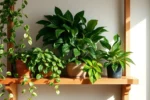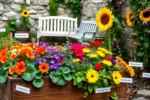Welcome to “DIY Plant Display Ideas for Homes,” where the art of gardening meets the creativity of home design, offering you endless possibilities to transform any space into a lush oasis. Whether you’re just beginning your gardening journey or you’ve cultivated a green thumb over the years, this guide is your ticket to discovering delightful ways to showcase your beloved plants indoors.
In this collection, we’ve curated a variety of plant display ideas that not only enhance the beauty of your home but also bring the soothing essence of nature right to your doorstep. These displays promise to offer practical benefits such as improved air quality and a boost in mood, all while providing an opportunity to express your personal style and creativity.
Imagine the satisfaction of crafting a stunning plant display that becomes the focal point of a room, or the joy of nurturing a thriving indoor garden that impresses every guest. With our step-by-step techniques and tips, you’ll gain the confidence to create vibrant displays that flourish, proving that successful gardening is within everyone’s reach.
Create Hanging Mason Jar Planters
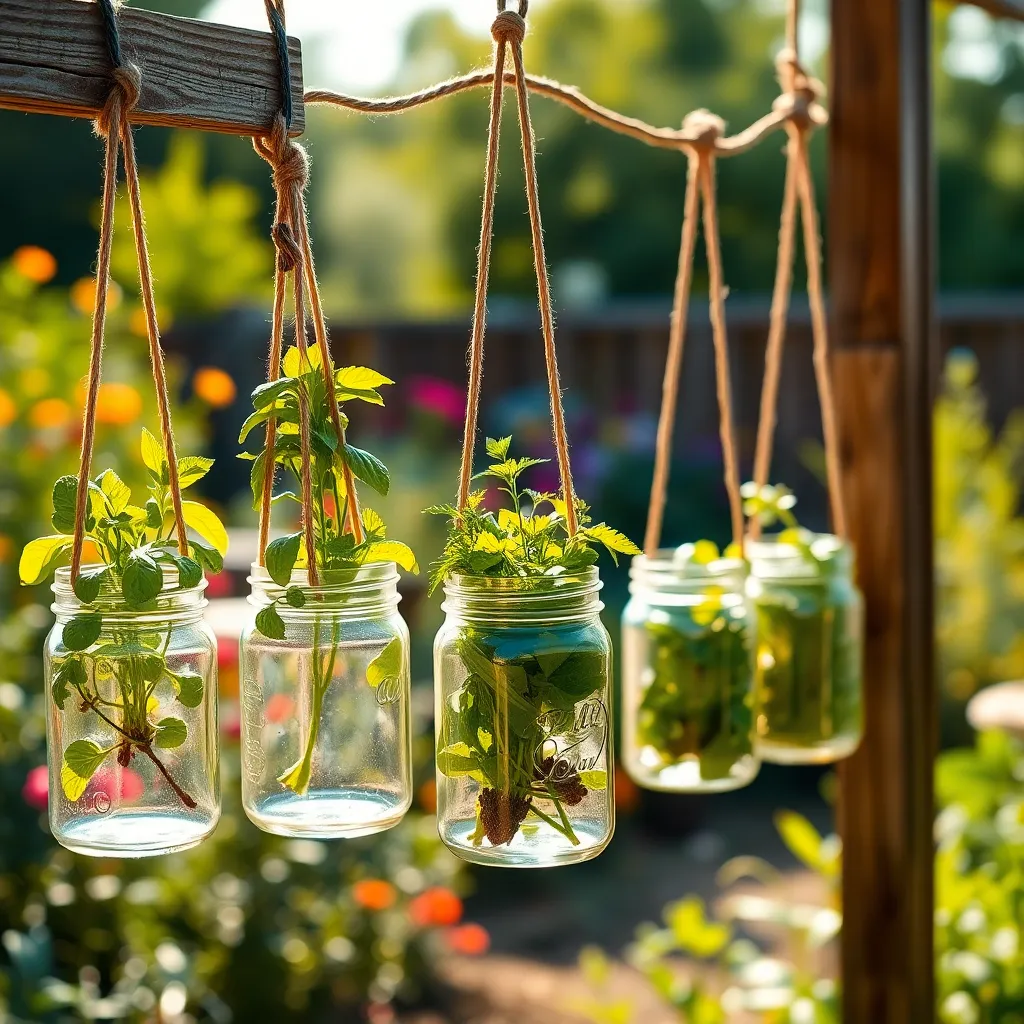
Hanging mason jar planters offer a charming way to bring greenery into your home, utilizing vertical space efficiently. To start, gather a few mason jars, some sturdy twine or wire, and a selection of small plants such as herbs or succulents.
First, ensure your mason jars have proper drainage by adding a layer of pebbles at the bottom. This step is crucial as it prevents water from pooling at the roots, which can lead to root rot.
Fill the jars with a lightweight potting mix, which is ideal for the small root systems of your chosen plants. For herbs like basil or mint, ensure the soil remains slightly moist but not waterlogged, watering them once or twice a week depending on humidity levels.
When selecting plants, consider your home’s lighting conditions; succulents such as jade or echeveria thrive in bright, indirect light. For those with less light, choose plants like pothos or spider plants, which are more forgiving in lower lighting.
Once potted, hang your mason jars securely using a sturdy hook in a well-lit area. Regularly rotate your planters to ensure even light distribution, promoting healthy, balanced growth.
Build a Vertical Garden Frame
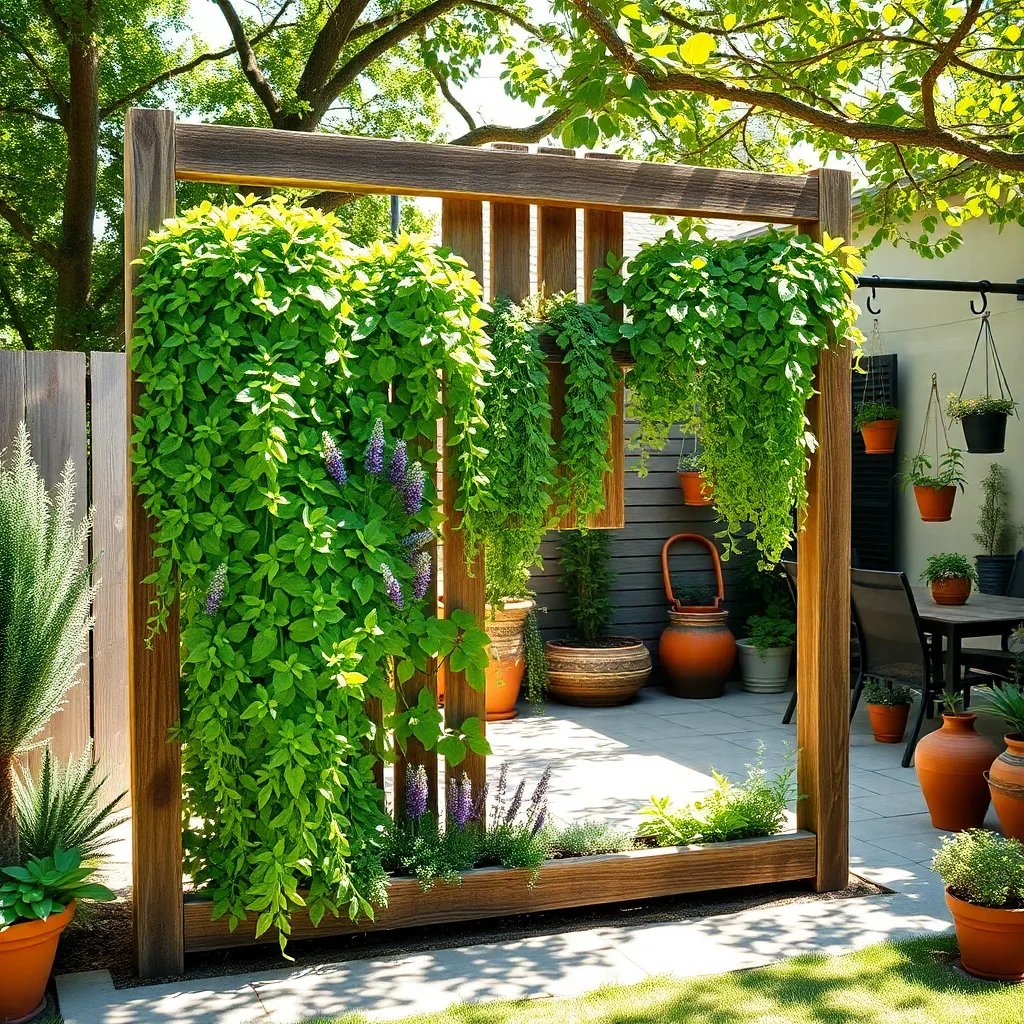
Building a vertical garden frame is a fantastic way to maximize space and add a lush, green touch to your home. Start by deciding on the location and size of your frame, factoring in available space and sunlight requirements.
Choose sturdy materials like wood or metal for the frame, ensuring it can support the weight of your plants and soil. Drill holes for drainage in any containers you plan to attach to the frame, preventing water from pooling and damaging your plants.
When selecting plants, opt for varieties that thrive in vertical gardens, such as herbs, succulents, or trailing vines. These plants are generally low-maintenance and adaptable, making them ideal for vertical setups.
To keep your vertical garden healthy, use high-quality potting mix that retains moisture yet drains well. Watering can be a challenge in vertical gardens, so consider installing a drip irrigation system for consistent moisture levels.
For more advanced gardeners, experiment with creating a living wall by incorporating a mix of textures and colors. This can include flowering plants for seasonal interest and foliage plants for year-round greenery, making your vertical garden a dynamic and evolving feature.
Repurpose Ladders for Plant Stands

Repurposing old ladders as plant stands is a creative way to showcase your plants while optimizing space. Choose a sturdy wooden or metal ladder and ensure it is clean and free from any old paint that might flake off onto your plants.
For beginners, start by placing the ladder near a sunny window or in a bright spot on your patio. Ensure that each step of the ladder is wide enough to accommodate small pots, allowing you to create a tiered display of different plants.
Select plants that require similar care for each level to make watering and maintenance easier. For example, place sun-loving succulents on the top rungs, while moisture-loving ferns can thrive on the lower steps where they are more shaded.
Advanced gardeners might consider adding hooks to the sides of the ladder for hanging plants, creating a dynamic vertical display. Additionally, using lightweight, breathable pots made of materials like terracotta can help prevent overwatering by allowing excess moisture to evaporate, promoting healthier root systems.
Design Tiered Plant Shelves
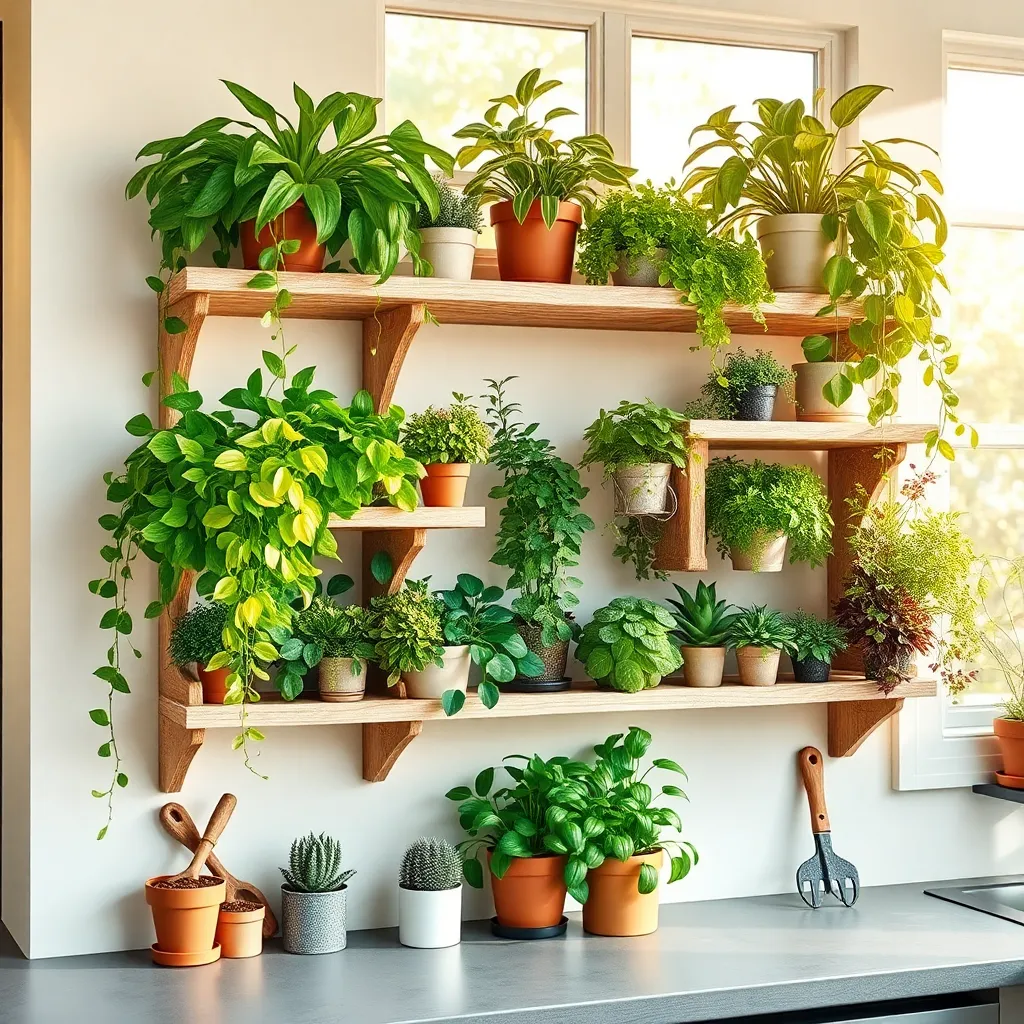
Creating tiered plant shelves not only maximizes vertical space but also adds a dynamic element to your plant display. Start by choosing a sturdy material like wood or metal that complements your home’s aesthetic while providing a stable base for your plants.
Ensure each tier receives adequate light by positioning shelves near a window or under grow lights. Consider the light requirements of your plants: place sun-loving species on the top tier and shade-tolerant varieties on the lower ones.
When arranging plants, use different pot sizes and shapes to create visual interest. Mix in trailing plants like pothos or string of pearls on the upper shelves to add a cascading effect that enhances the display’s depth and texture.
Watering can be tricky on tiered shelves, so use pots with drainage holes and place saucers beneath them to catch excess water. Avoid overwatering by checking the soil moisture regularly; a moisture meter can be a handy tool for this purpose.
Craft Macramé Plant Hangers
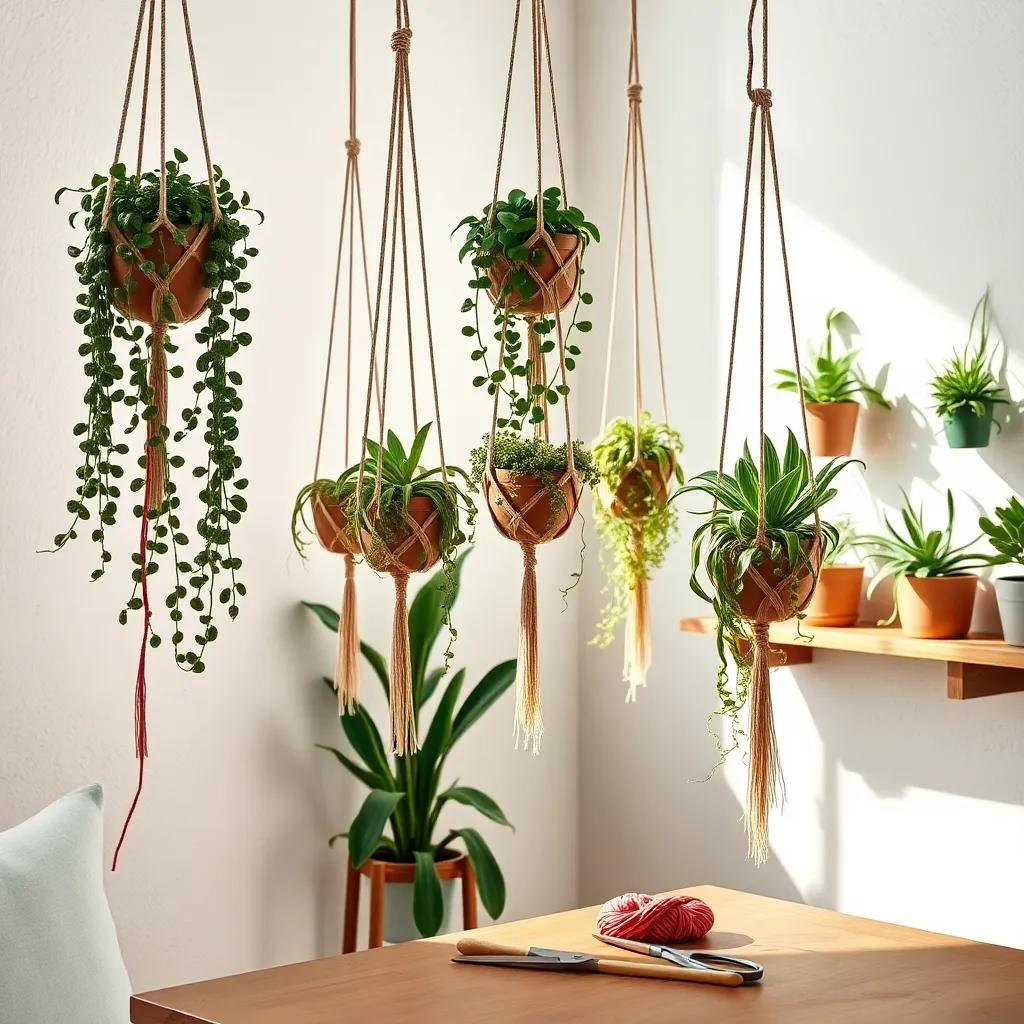
Macramé plant hangers offer a stylish and space-saving way to display plants, especially in smaller homes. Starting your macramé project is simple; all you need are some basic materials like cotton cord, a metal ring, and scissors.
To craft a basic macramé hanger, cut eight lengths of cord approximately four times the desired finished length of your hanger. Fold the cords in half through the metal ring and secure them with a knot to form a loop for hanging.
Once your cords are attached, divide them into pairs to begin knotting. Beginners might start with a simple square knot pattern, while more advanced crafters can explore intricate designs using techniques such as spiral knots or half square knots.
After creating your desired pattern, gather all cords together and tie a knot at the base to hold your plant pot securely. Ensure your knots are tight and evenly spaced to support the weight of your plant effectively.
When choosing plants for your hanger, consider species like pothos or spider plants that thrive in various light conditions. These plants are forgiving with watering schedules, needing water only when the top inch of soil becomes dry.
Conclusion: Growing Success with These Plants
In exploring the world of DIY plant displays, we’ve uncovered five key concepts that not only enhance your home but also nurture your relationship: fostering collaboration through joint projects, enhancing communication as you brainstorm ideas, cultivating a sense of accomplishment as a team, creating shared spaces that symbolize unity, and nurturing growth—both in your plants and your partnership. These concepts remind us that, much like tending to a plant, relationships thrive on care, attention, and mutual effort.
As an immediate next step, choose one plant display idea from our article to work on together this weekend. Whether it’s crafting a vertical garden or repurposing an old ladder, this project is an opportunity to strengthen your bond while beautifying your home.
Remember, nurturing your relationship is a continuous journey. Bookmark this article for future reference and revisit it whenever you need inspiration or a reminder of the simple yet impactful ways you can invest in your partnership.
Looking ahead, the success of your relationship is rooted in the daily actions you take together. By incorporating these DIY projects into your life, you’re not just creating beautiful spaces—you’re building a lasting and thriving relationship.


